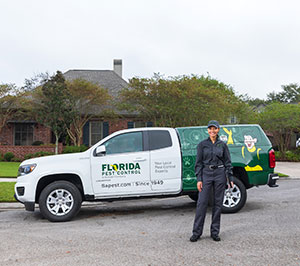Bed Pest Treatment Break Down: Comparing Chemical Vs. Non-Chemical Solutions
In the realm of bug control, specifically when dealing with the persistent problem of bed pests, the choice between chemical and non-chemical therapy options can be a pivotal one. Both techniques supply unique benefits and disadvantages, influencing factors such as efficiency, safety and security factors to consider, and overall price. By analyzing the nuanced details of each approach, a clearer understanding of which course to go after in attending to a bed bug invasion can be attained.
Efficiency of Chemical Therapies
Chemical therapies for bed pest invasions have actually been widely recognized for their rapid and powerful effectiveness in removing these insects. When taking into consideration the efficiency of chemical treatments, it is crucial to recognize that they can offer a fast and complete solution to a bed pest trouble.
Moreover, chemical therapies have the advantage of using residual results, suggesting that they can proceed to get rid of bed insects even after the preliminary application. This residual action is especially useful in combating any type of possible re-infestations. In addition, the rapid action of chemical therapies can bring alleviation to individuals dealing with extreme bed bug infestations, permitting them to restore control of their home quickly.
Safety Interest In Chemical Solutions
One critical element that requires mindful factor to consider when using chemical services for bed bug treatment is guaranteeing the safety and security of occupants and the setting. Direct exposure to certain chemicals used in bed pest therapies can lead to breathing concerns, skin irritation, or other adverse reactions, particularly in individuals with pre-existing problems or sensitivities.
In addition, the environmental influence of chemical services is an additional significant factor to consider. Some pesticides made use of in bed insect treatments may be harmful to helpful insects, wildlife, and ecosystems if they leach right into the soil or water systems. It is vital to make use of chemical treatments carefully, complying with security guidelines, and considering much less poisonous alternatives to alleviate these dangers and guarantee the secure and reliable management of bed bug invasions.
Advantages of Non-Chemical Techniques
Considering the potential safety and security issues and ecological effect linked with chemical solutions for bed pest treatment, discovering non-chemical techniques provides a promising choice with several distinctive advantages. Non-chemical therapies are environmentally pleasant, as they do not add to air or water contamination, making them a lasting option for pest control.
In addition, non-chemical services can be reliable in targeting bed pests, including hard-to-reach locations where chemical treatments may not pass through. Approaches such as warm therapy, vacuuming, steam cleaning, and cushion encasements provide thorough obliteration without using unsafe chemicals. Additionally, non-chemical methods can be much less turbulent, requiring very little preparation and permitting quicker reentry right into treated areas. On the whole, going with non-chemical bed pest treatment approaches not only focuses on safety and security and environmental security yet likewise makes certain efficient and detailed bug control.
Limitations of Non-Chemical Treatments

Furthermore, non-chemical therapies usually need multiple applications to achieve successful obliteration. This can be taxing and might not always ensure total removal Discover More Here of all bed pests and their eggs, especially in hard-to-reach or surprise places.
In addition, use this link the success of non-chemical therapies greatly depends on correct implementation and thoroughness, which can be challenging for individuals without professional proficiency. Inadequate application of non-chemical techniques may lead to insufficient removal, bring about persistent infestations and the need for additional treatments.
For that reason, while non-chemical treatments have their advantages, it is necessary to recognize these restrictions and consider them when establishing one of the most reliable technique for taking care of bed bug problems.
Price Contrast: Chemical Vs. Non-Chemical Options
Provided the constraints connected with non-chemical therapies, an essential facet to review in the context of bed bug management is the price contrast between chemical and non-chemical options. Chemical therapies usually include the application of pesticides by specialists, which can range from $250 to $900 per room, depending on the seriousness of the infestation and the dimension of the area to be dealt with. On the other hand, non-chemical treatments like warmth treatment or steam can be extra costly, with expenses ranging from $1,000 to $6,000 for a whole home. While the preliminary cost of chemical therapies might seem lower, several treatments might be called for to totally remove the infestation, possibly enhancing the total expense. On the other hand, non-chemical choices may give a more environment-friendly and sustainable option, although they can be cost-prohibitive for some people. Ultimately, when considering the expense of bed bug therapy options, it is necessary to evaluate the upfront expenditures against the effectiveness and lasting sustainability of the selected method.
Conclusion

Considering the prospective security problems and environmental effect linked with chemical services for bed insect therapy, exploring non-chemical methods provides a promising option with numerous distinct benefits.Provided the constraints linked with non-chemical treatments, a necessary facet to evaluate in the context of bed insect monitoring is the cost comparison between chemical and non-chemical alternatives. In contrast, non-chemical treatments termite problem like warm therapy or heavy steam can be much more costly, with prices ranging from $1,000 to $6,000 for a whole home. While the initial expense of chemical therapies might seem lower, several treatments may be needed to completely eradicate the infestation, possibly raising the overall cost.In final thought, when contrasting chemical and non-chemical bed insect therapy choices, it is necessary to take into consideration efficiency, safety and security, benefits, restrictions, and price.